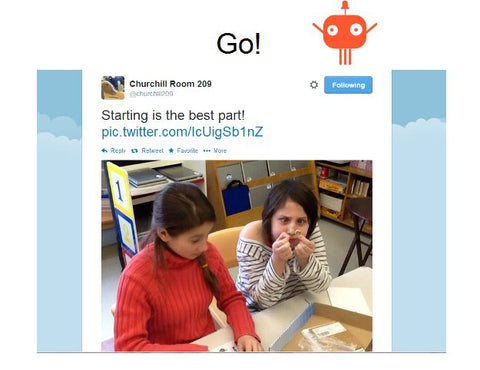- Continue Shopping
- Your Cart is Empty
Bringing Making Out of the Makerspace: Part III
* This is an excerpt from a presentation I made at Maker Faire, in San Mateo, on May 18 called "Bringing Making Out of the Makerspace". I'll be posting excerpts from that presentation this summer. I started with this post, Part I, and this post, Part II. *
Ready... Set
Once I'm in the classroom, the energy starts to rise. The kids know something different is about to happen and they are ready to go. But before we start making, there's some groundwork that has to happen. This is where we cover vocabulary – this helps with communication. Provide the theory. Demonstrate technique. Make sure they know what to do to start. Most importantly, give them the tools to troubleshoot. I use that word, "Troubleshooting", and depending on the project give a simple checklist. "If it doesn't light up – 1. have you tested the circuit? 2. is the polarity correct? 3. Are your connections good?" I also believe it's important to talk about frustration. All makers know about frustration. Not everything works the first time. Learning how to recognize and deal with frustration is an important skill. So talk about it. Talk about taking a deep breath, a walk around the classroom, and giving yourself another chance. I also talk about collaboration and sharing. How the goal is not to finish the project first, but to all be successful. Then we break into smaller groups. This is key. Nobody should work alone, it's too easy for fear and frustration to build. And in smaller groups, nobody feels lost.

Go!
And finally, we're off. Hopefully, to a successful start. But not always. Beware the first 10minutes. This is where I take my deep breath as the chorus of "I don't know what to do's" and "Can you do this for me?" starts up around the classroom. But I push back, gently. I remind them what we've discussed. I demonstrate, repeatedly. If there is symmetry, I'll demonstrate one side, and tell the student to do the other. I most often answer a question with another question, or a "why don't you try that". I encourage exploration. And gradually, the room turns, and instead of "I need..." it's "come see". And that is when I gradually start exposing them to more. Maybe a tool they haven't seen before – wirestrippers are hugely fascinating. Maybe a type of circuit they could try on their next project – a parallel circuit means two LEDs and you can make a smiley face. Maybe sharing ideas between tables or of projects I've seen before. I talk about where to find the parts we're using, and what other things we can do with them. Because I want them to keep making. I want them to keep exploring.

That's a wrap!
And then we're done. Most classes end with some sort of wrap up. The teachers I work with call this consolidation. I love it. I love to hear what they've learnt. How they deal with frustration. Because we take these ideas and move on to the next classroom or the next library or the next workshop, and continue to encourage kids to keep learning, keep growing, and keep making.

